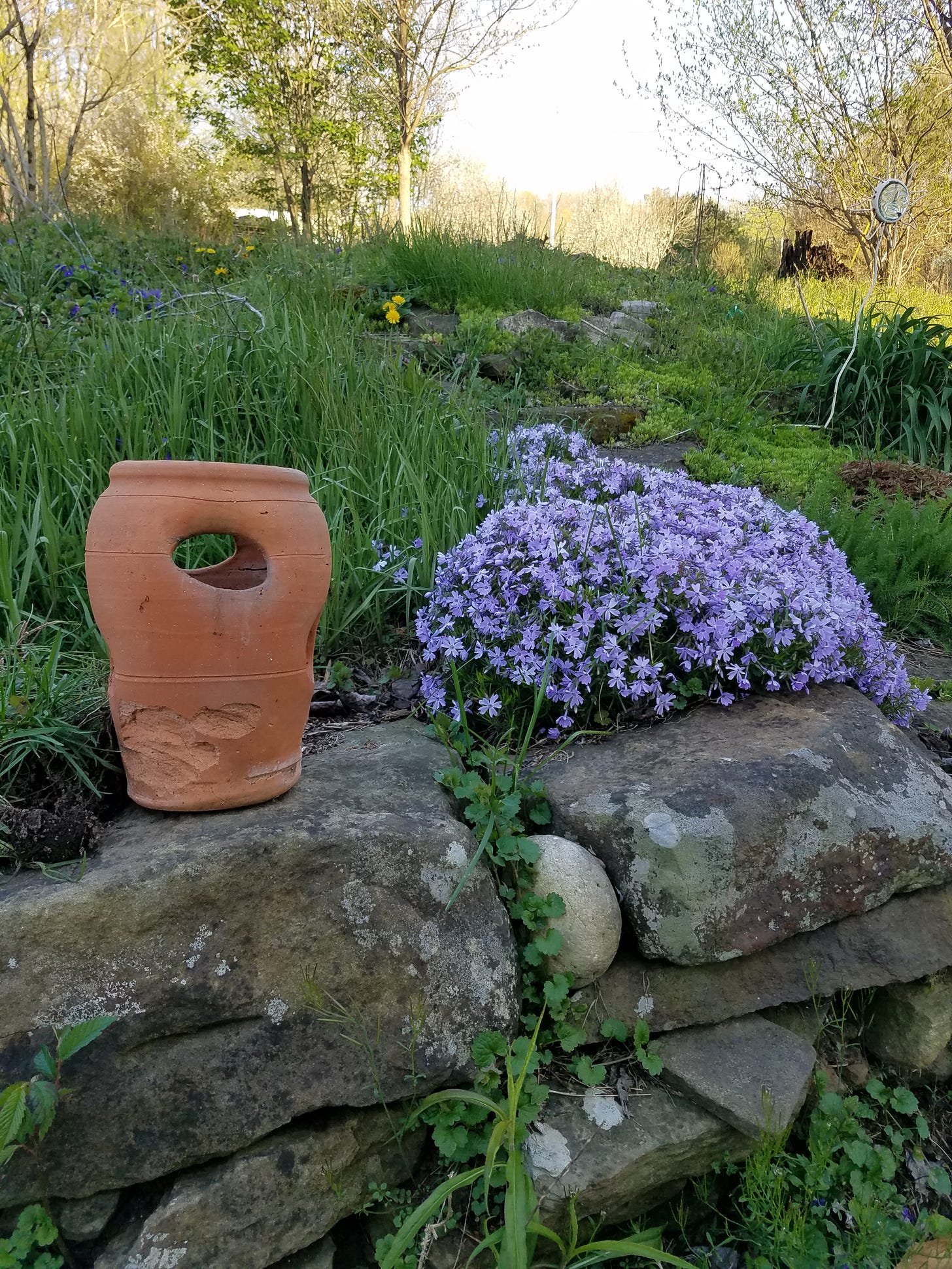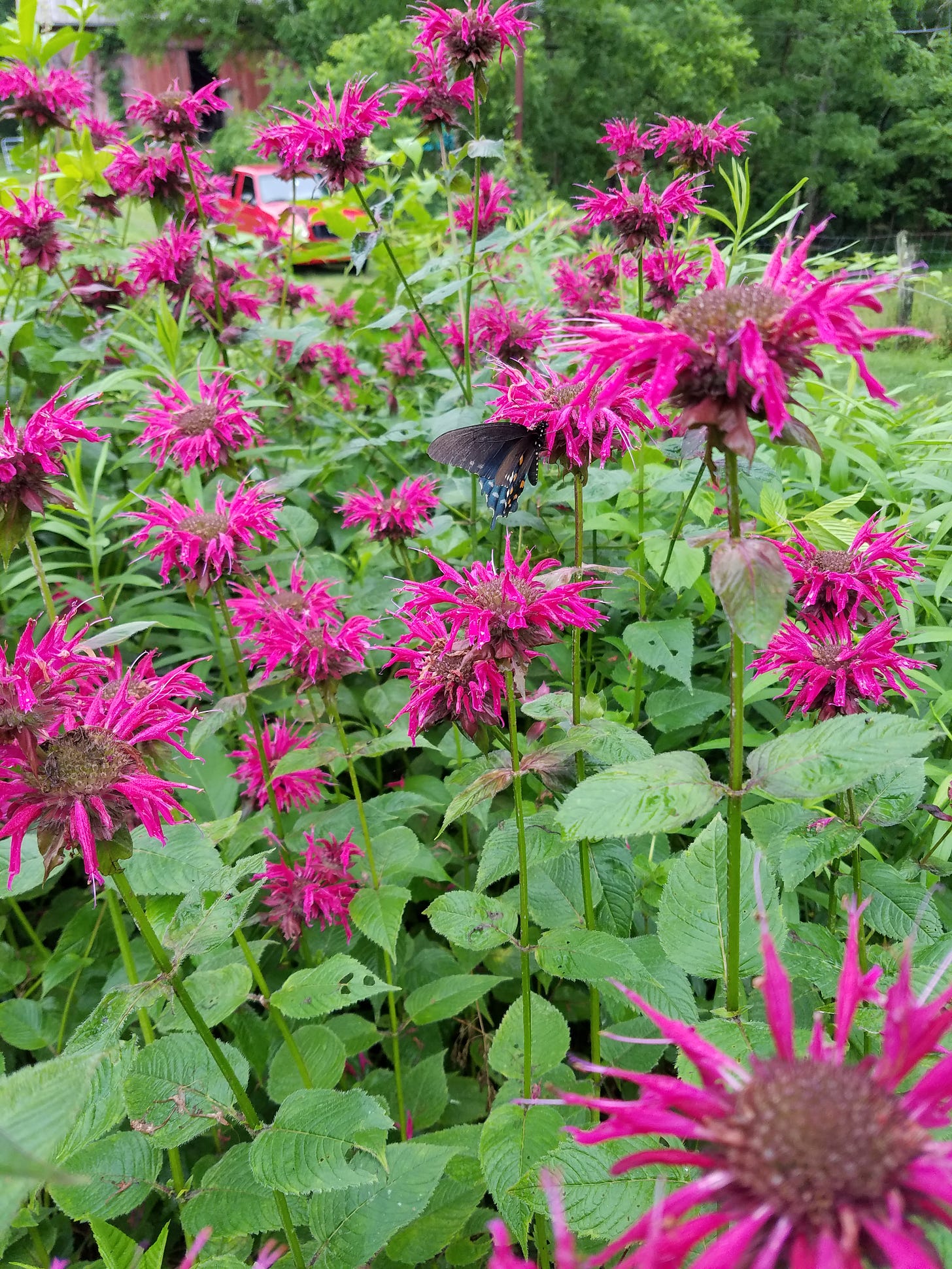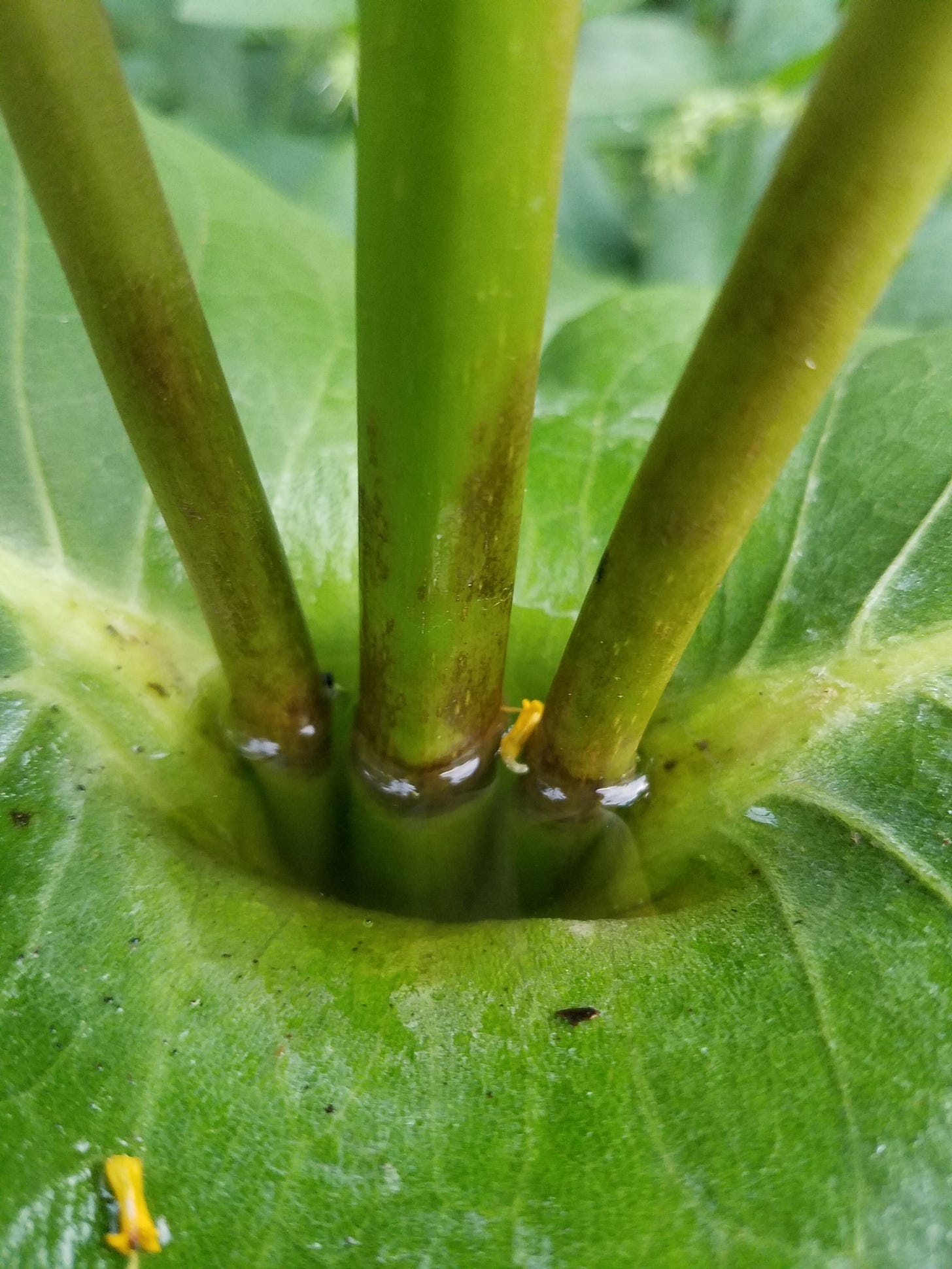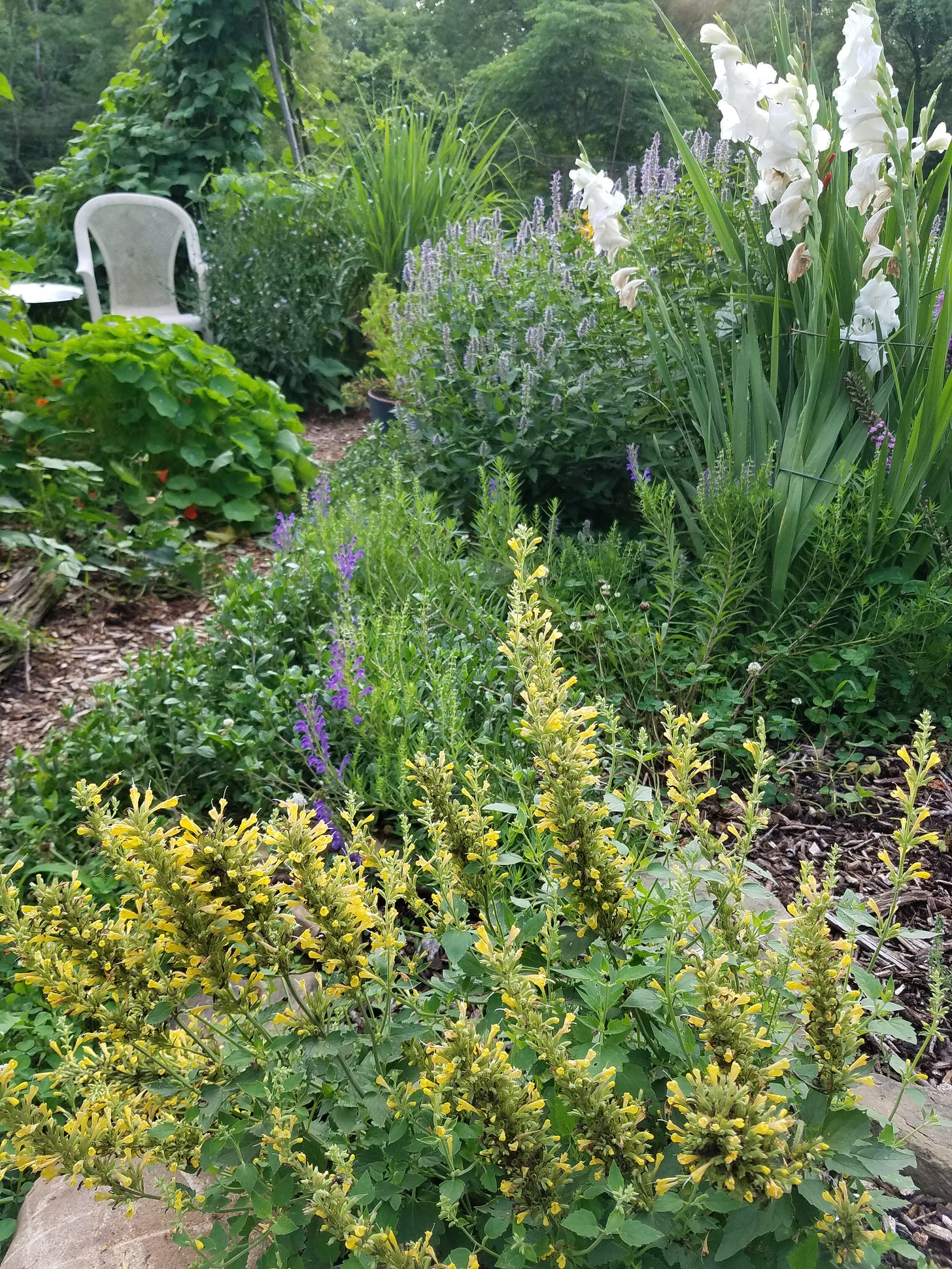How to make it through winter in Ohio: Part 1
Flower photos
I don't mind the cold, and I enjoy the slow pace of winter, so it’s not a difficult season for me. It's dull and colorless though, and the seed catalogs haven't arrived yet. I needed a reason to search through colorful photos, and a post about easy-care perennials gave me a great excuse to do just that. I hope my readers — even the non-gardeners— enjoy these vibrant images from the growing season.
I'm willing to do a little extra for work for certain flowers if the result is a big payoff (supporting gladiolus for instance), but my favorites are the ones that take care of themselves without staking, weeding, fertilizing, or watering. Creeping phlox is one such plant, and while researching it I discovered it is native to the eastern US., which makes me like it even more. I also learned there are two similar species commonly called creeping phlox: Phlox sublata and Phlox stolonifera. While plant taxonomists apparently prefer to call the former ‘moss phlox,’ it is this sun lover that is usually seen for sale as ‘creeping phlox’ at local nurseries, and I'm fairly certain this is the plant in my flower beds. Phlox stolonifera, also a native plant of the Appalachian states, prefers a moister, shadier spot, and has less needle-like foliage.
The ease of care for this spring bloomer is a largely a result of its growth habit. It forms a thick mat that blocks weeds, and spreads just the right amount at about 18 to 24 inches at maturity. Phlox drapes charmingly over rock walls, and stays at least partially evergreen during winter. The hot pinks to cool lavender blues of this plant should please even the pickiest (and laziest) gardener. I truly do nothing to maintain mine, not even trimming.
I haven't noticed much insect activity around these plants, so it's possible that the selections available for sale diverge greatly from the straight species due to selective breeding. (Readers unfamiliar with this issue can read more in the post linked below.) Despite this shortcoming, creeping phlox is a stellar citizen of rock gardens, low walls, and sunny banks.
What's not to love about Monarda didyma? This native summer bloomer is a magnet for butterflies and hummingbirds, and asks for nothing in return except for space to spread out. Plant this mint family member in a pollinator meadow or mixed with other aggressive growers in a spot with poor soil to take advantage of its vigor. Mints don't have to be a problem if used correctly, which means not placing them with timid growers. Good companions in Ohio include black-eyed susans, coneflowers, and other mints.
Coincidentally this plant also has a more shade tolerant cousin, Monarda fistulosa. Though I've never observed either Phlox species, nor M. didyma, outside of garden beds, I have glimpsed M. fistulosa in the wild. It a shy plant that peeks out from brushy edges and occasionally shows up along roadways. Commonly called wild bergamot, its blooms are an understated pink to lavender, unlike the vibrant reds of its relative.
Cup plant, or Silphium perfoliatum, would be worth growing even if it didn't produce spectacular yellow flowers on towering stems. Though I admire the blossoms and the butterflies that they entice, the main attraction for me has been the cups that give the plant its name. Whenever I passed by during this past summer, I couldn't resist peeking into these little basins that form between stem and leaf to search for insects getting a drink.
This plant did need a little extra attention: It’s slightly too close to a shade tree, and doesn't receive full sun until well into morning. I had to stake it to counteract its tendency to reach out to the light. This could easily be remedied by planting in full sun, but as usual I was short on space (due to my addiction to perennials) and stuck it in the best spot could find at the time.
Speaking of best spots, the photo above shows one of my favorite views during May. The Dianthus is in its full glory and is a feast for the eyes. Pinks originated in Europe and Asia, and get their common name from the fringed look of the flower margins (as if they were cut with pinking shears) and not their color. They bloom for most of May, form a mat that impedes weeds, and keep their blue-green foliage through the winter. Shown above in foreground, and below beyond the soapwort, is Dianthus ‘Neon Star.’
The Agastache pictured below, known as giant hyssop or anise hyssop, dominates in this bed starting in mid-summer, and blooms well into fall. The descriptor giant is not an exaggeration since this plant can approach four feet in height, and spreads even wider. It tends to collapse from its own weight by autumn, but immediately sends up new shoots in the center. Sometimes I trim back the prostrate stems for a neater appearance, but this isn't necessary — pollinators love it either way.
Agastache foeniculum is in the mint family, but rather than spreading by runners, forms one main clump. This is good if you want to contain it in one spot, bad if you want to easily propagate it. Don't confuse it with true hyssop, a smaller Mediterranean cousin, which unlike giant hyssop does not do well here in Ohio.
Another Agastache I've fallen in love with is ‘Kudos Yellow,’ in the foreground of the photo above. This plant is so amazing that, despite having to purchase a start each spring, it's still one of my favorite plants. A hybrid of Western species, it thrives in our Ohio summers but can't make it through the wet winters, so I treat it as an annual. The crushed leaves smell divine, and it produces happy yellow flowers from early summer to well into fall. Perhaps this year in will survive. Time will tell.
The burst of orange that butterfly weed provides in late June and early July lasts only a few weeks, but since this plant requires so little care, it is totally worth including wherever there is room. I'm pretty sure my original plant just seeded itself here and there, so I've literally done nothing for most of my specimens, not even planting. A frenzied mass of small insects swarms above it during the bloom time, as well as various swallowtails. It can be observed in masses on dry road banks, and in fact is truly a weed, the ultimate low-care perennial.















Ah, so that’s why it’s called cup plant! I haven’t grown it myself and didn’t know that. Now I want to grow it. Lovely photos! Thanks for the visual respite from our Midwestern winter browns.